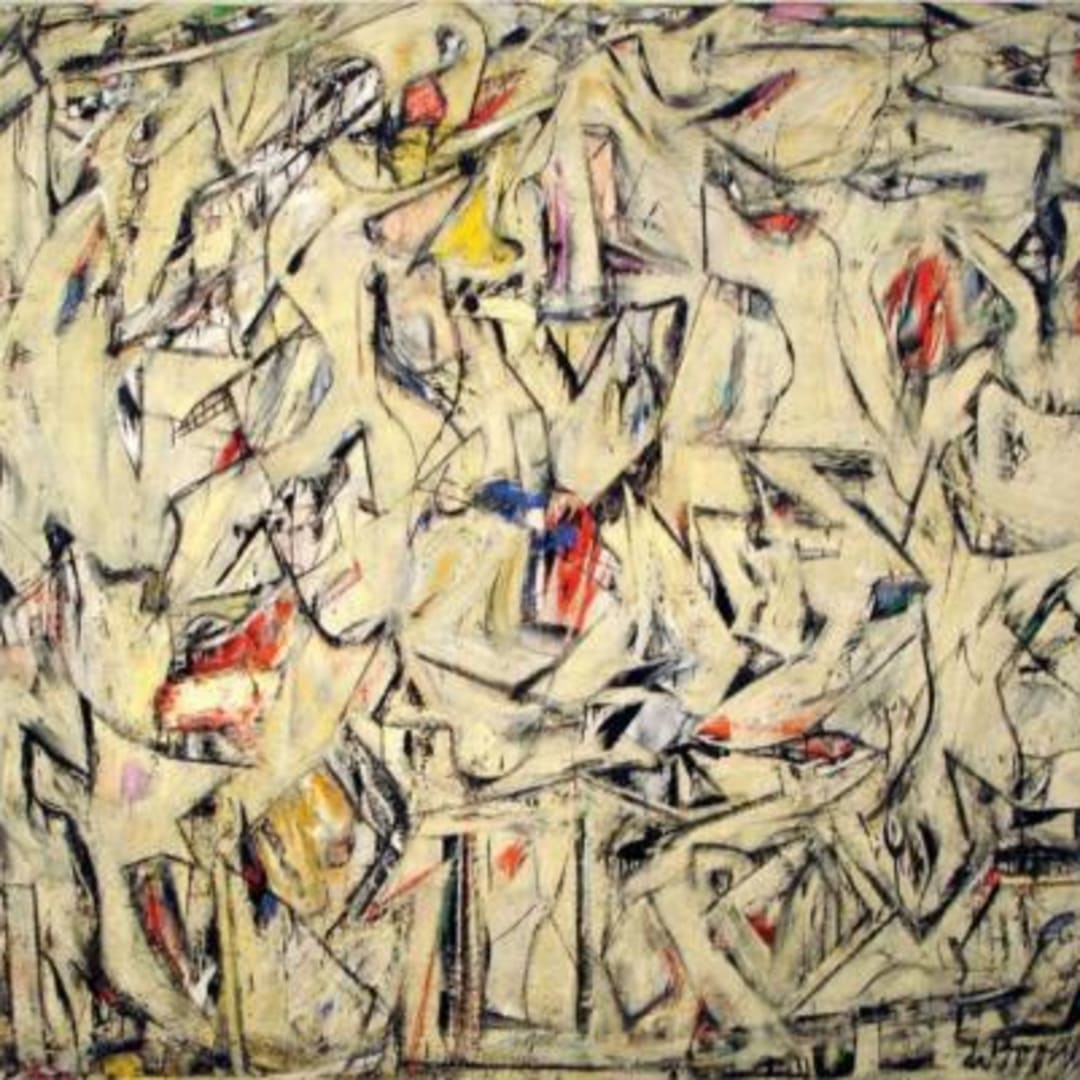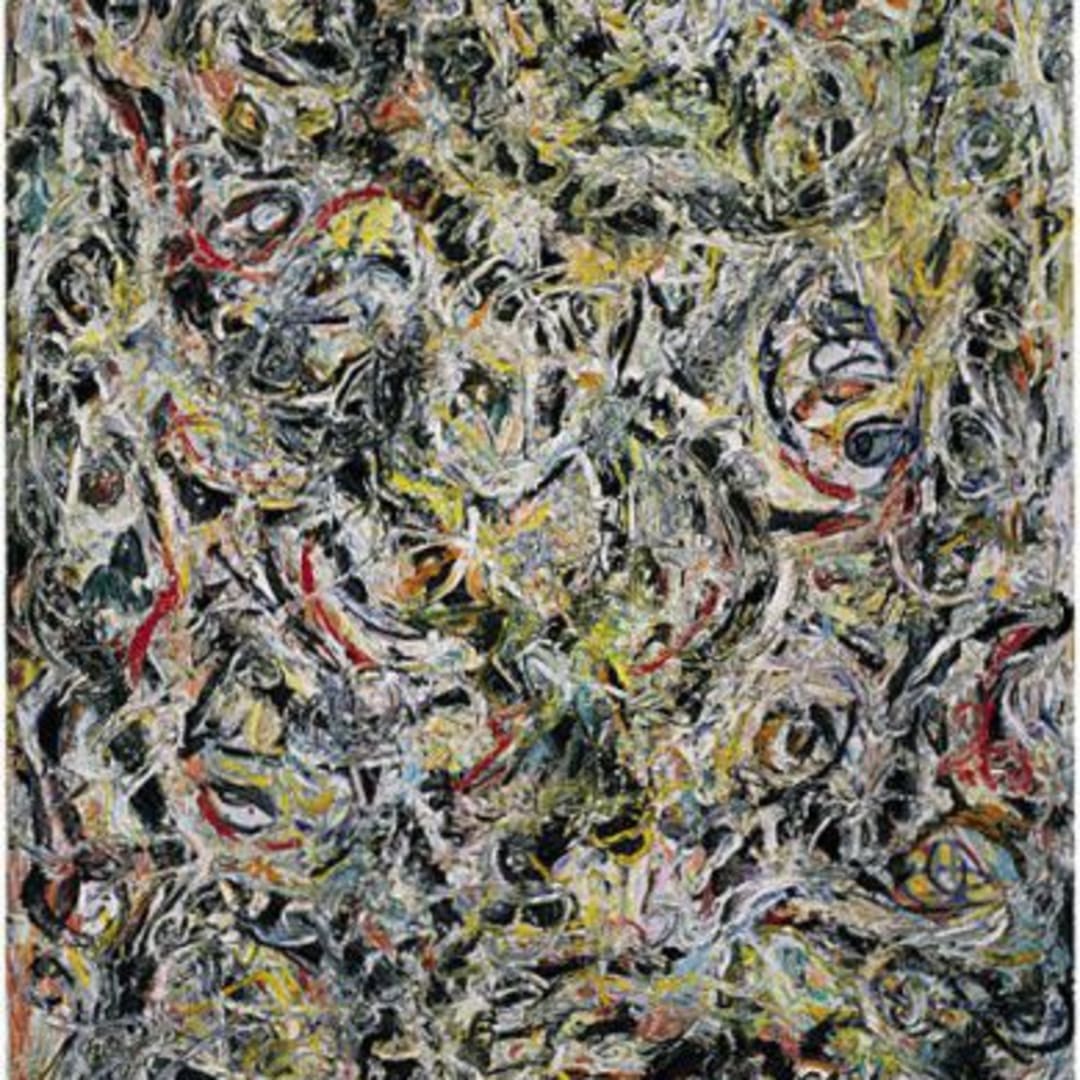In the post-war America of the 1940s and 1950s, a number of New York Abstract Expressionist Artists captured the imagination of the public with regard to the mechanisms of their craft − a style described as “Action Painting.” In 1952, it was art critic Harold Rosenberg who officially named this style within his article about the trend among various members of the New York School, most notably Jackson Pollock, Willem de Kooning and Franz Kline. In the years leading up to the American Pop Art movement, Action Painting created enhanced interest in a form of Abstract Expressionism that felt significantly different and new. It was exciting, but also more understandable and accessible to a wider audience.
For a majority people, just as Andy Warhol is the first name that comes to mind when discussing Pop Art, Jackson Pollock is the first thought when considering Action Painting. In contemplating Pollock’s art, the viewer can’t help but wonder what gestural movements were required to produce such a masterfully orchestrated result on canvas. It’s also not uncommon to wonder whether the result, the work of art before us, was intentioned to look as it does – or did it merely take on a life of its own?
Jackson Pollock’s creations, perhaps more than others, revealed aspects of his techniques by very nature of their outcomes. For instance, paint that’s been dripped, splattered and flung appears on the canvas as though that’s the only possible way it could have been placed there. Pollock also fascinated us because of the manic action we continue to witness when observing a piece of his work for any period of time. Jackson Pollock’s enormous talent produced Abstract Expressionist Art that sustains perpetual movement. Actionable scenes representing moments of conflict, love, joy, strife and dance – appear, disappear and reappear as our mind takes in the organic colorful forms interacting on the canvas.
Likewise, attributes about continuous action within the framework of the canvas (and beyond) are relevant in describing the works of Willem de Kooning as well. Though de Kooning painted considerably more constructed and compartmentalized landscapes than Pollock, there are a number of similarities that point to the latitudes achieved by way of gestural movement. Willem de Kooning’s Abstract Expressionist paintings feature a blended approach that incorporates a combination of intentional forms with those produced by way of the subconscious.
Indeed, it’s the revelations of the subconscious that lends Action Painting such a strong connection with the viewer. Brushstrokes produced by way of enhanced movement, such as a hurried or jerked movement reveal themselves to be just that. The freedom of such movements indicates a letting go that delivers an outcome beyond what the conscious mind could produce. Such movements provide the viewer insights into the process of art production that are simply not possible in more cerebral artistic applications.
The point that a wider audience can appreciate how the art is constructed is likely, at least in part, responsible for the broader appreciation of this style of Abstract Expressionism. Certainly, there is an inherent connection between viewer and artist when such revealing techniques present greater understanding about the nature of physical production.
In the works of Franz Kline, we see another layer of human connection made possible by the method of action painting. Like Willem de Kooning, Kline’s creations combine planned execution based upon preconceived notions, including those produced by the artist’s drawings. It was de Kooning who suggested that Kline use a projector to view his drawings enlarged, which produced an artistic breakthrough for the artist. Using the structure provided by his drawings, Franz recognized how to enhance his abstract vision by way of Action Painting.
Often derived from autobiographical recall, Kline’s abstract interpretations yielded works greatly appreciated for the impulsive production evident in the artist’s hurried brushstrokes. Along with the likes of Pollock and de Kooning, Kline tapped into a form of Abstract Expressionism that turned the art-making event into an integral aspect of the finished product. For the viewer of such art, there’s a feeling of witnessing something more than a wholly manipulated piece of art. It’s akin to the differences noted in listening to recorded musical performance from a studio versus one that’s been captured “live.”
The conceptual impact of Action Painting has forever changed the way in which we consume such creations. Whereas artists have always had the ability to manipulate the viewer with regard to their motivations − whether concealing or even purposely misleading – Action Painting reveals an undeniable component of the artist’s approach. Action painting tells us the truth!



